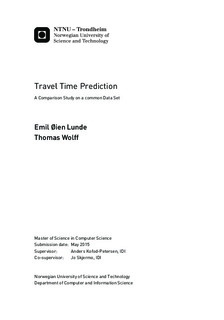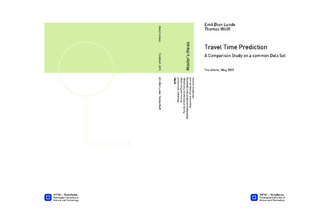| dc.description.abstract | Intelligent transportation systems are information and communication technology solutions in the transportation sector. Systems for predicting travel time are examples of such systems. Intelligent transportation systems are becoming an increasingly larger part of modern society and may contribute to improve traffic efficiency and safety. Accurate and reliable information is crucial for these types of systems, which is why conducting research in this area is important.
A great variety of approaches to travel time prediction are reported in the literature. Two categories of machine learning approaches that are employed in the traffic domain are ensemble learning and online learning. These two approaches are used in order to provide accurate and reliable information. Ensemble learning approaches combine predictions from a set of baselines in order to achieve higher prediction accuracy, whilst online learning methods are capable of adapting to changes in the underlying data set. As the approaches reported in the literature are tested on different data sets, it is difficult to compare their prediction accuracy. In order to do a fair comparison, this work investigates the methods' performance using a common data set. Two experiments are conducted, one comparing state of the art ensemble learning approaches, and the other comparing state of the art online learning approaches.
The ensemble learning approaches investigated in this study are bagging, boosting, lasso, and a fuzzy rule based system. These ensemble learning methods are also compared to a simple average of the baselines' predictions. The online learning methods investigated are online-delayed extended Kalman filter and local online kernel ridge regression.
The results indicate that there is no method that consistently outperforms the other methods in either of the two experiments. Among the ensemble learning methods, using lasso and fuzzy rule based system results in prediction errors with the lowest deviation, whilst bagging is the method with least bias. Additionally, bagging seems to follow the actual travel times better than the other methods. As for the online learning methods, using online-delayed extended Kalman filter results in prediction errors with the lowest deviation, whilst local online kernel ridge regression has lowest bias. | |

